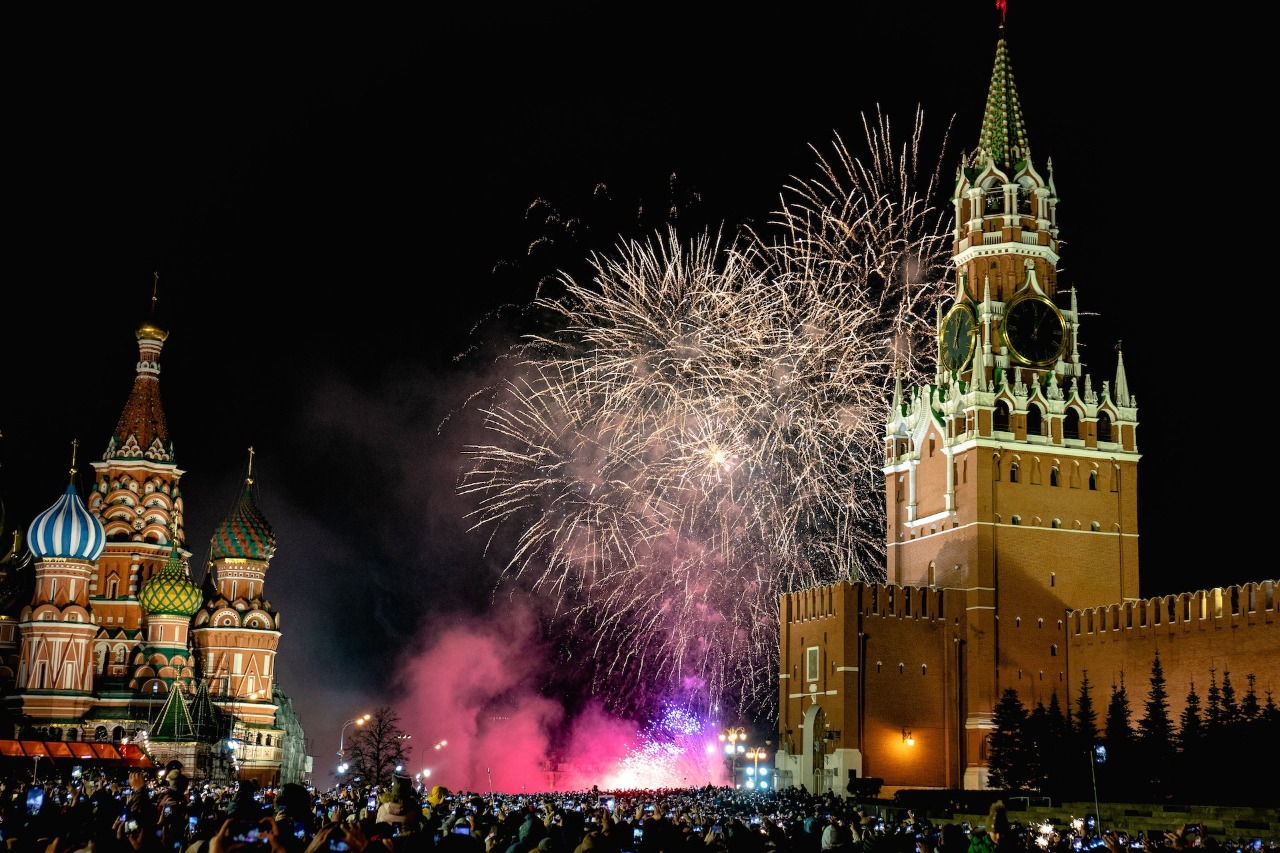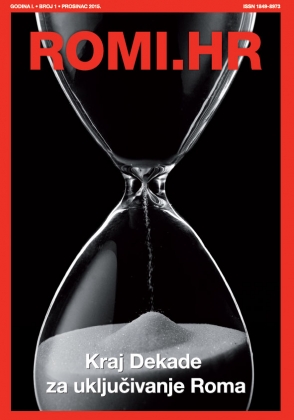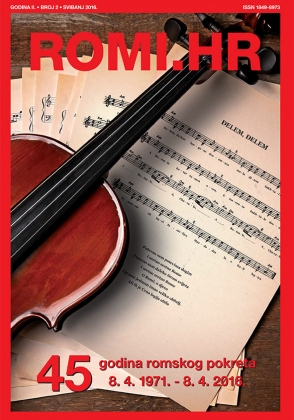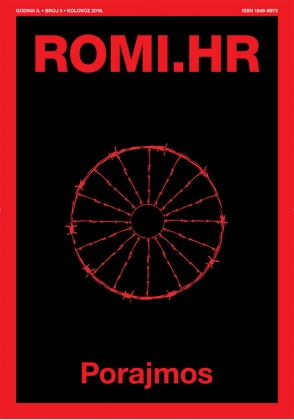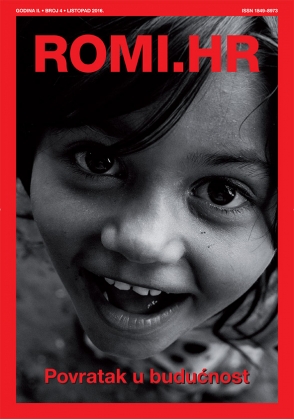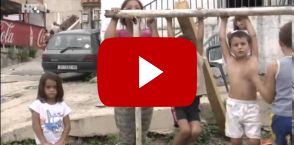Zanimljivosti ROMI.HR
/U modernoj Rusiji nijedna proslava nije popraćena tolikim običajima, ritualima i praznovjerjima kao Božić i Nova godina.
Prijevod: Antonia Mudrovčić
Početak proslava Božića u Rusiji seže u 10. stoljeće kad je kršćanstvo postalo državnom religijom. Novogodišnje i božićne proslave pomiješane su sa starijim tradicijama Slavena čak i u današnje vrijeme zbog toga što je prelazak s poganske religije na kršćanstvo u Rusiji bio popraćen mnogim problemima. Glavna prepreka bili su ljudi koji nisu htjeli prihvatiti novu vjeru koja je bila vrlo različita od poganskih vjerovanja. Nova religija nije automatski zamijenjena starom. Početkom 13.stoljeća napravljen je kompromis: pokršteni ljudi molili su se jednom Bogu, ali u kršćanstvo su bili uklopljene i neke poganske tradicije, rituali i štovanje duhova.
Do 17. stoljeća Rusko Carstvo mjerilo je vrijeme prema bizantskom kalendaru iz 5508. godine prije Krista, od navodne godine stvaranja svijeta prema bizantskom kalendaru. Taj je kalendar imao dva sistema računanja početka godine: od rujna ili od travnja. Direktivom Petra Velikog iz 1700. godine, Rusko Carstvo i Ruska pravoslavna Crkva počeli su upotrebljavati julijanski kalendar. Nakon Oktobarske revolucije 1918. godine komunistička vlada ukinula je julijanski kalendar i uvela gregorijanski. Komunistička politika rezultirala je smanjenjem aktivnosti pravoslavne crkve koja je postala jedva vidljivom u novoj državi. Proslave Božića nisu bile dozvoljene, a oni koji su nastavili slaviti u tajnosti snosili su velike posljedice. Kao zamjenu za božićne proslave, komunistička vlada počela je organizirati proslave državnih praznika, uključujući Novu godinu. I tako je Nova godina postala zamjenom za božićne proslave sljedećih 70 godina.
U današnjoj demokratskoj Rusiji većina ljudi slavi Novu godinu prema gregorijanskom kalendaru, a Božić prema julijanskom. Zbog razlike od 13 dana između tih dvaju kalendara, Božić se prema julijanskom kalendaru slavi 7. siječnja. Zbog te razlike Nova godina u gregorijanskom kalendaru poklapa se s postom prije pravoslavnog Božića. Crkva na ovaj dan dopušta iznimke jer većina pravoslavaca dočekuje Novu godinu s ostalim zemljama.
Proslava Nove godine javna je proslava kad se prijatelji i obitelji okupljaju i večeraju. Tradicionalno jedu rusku salatu, crveni kavijar, mandarine, i naravno, čaša šampanjca kad sad otkuca ponoć, nakon govora predsjednika na glavnim televizijskim postajama. Na početku večere svatko se prisjeća onoga što se događalo u prethodnoj godinu – dobrog ili lošeg. Ljudi jedni s drugima dijele važne vijesti i žele jedni drugima napredak. Ako netko ima kuću na selu, ljudi uglavnom tamo žele proslaviti Novu godinu. Posebno ako kuća ima rusku saunu, jezero ili hrpu snijega u koju mogu skočiti! Glavni gradski trgovi ukrašeni su vjenčićima i održavaju se božićni sajmovi. Poslije ponoći ljudi se vesele, pjevaju pjesme i gledaju vatromet. To je za Ruse glavna proslava u cijeloj godini.
Jedan od najpoznatijih simbola Božića širom svijeta je stariji čovjek koji djeci donosi darove. Neki ga zovu Djed Božićnjak, a u Rusiji ga nazivaju Djed Mraz (Ded Moroz). Roditelji obično pomažu djeci napisati pismo Djedu Mrazu. U pismu pišu kako su bili dobri tokom cijele godine i koji bi poklon htjeli dobiti 31. prosinca ispod bora.
Teško je reći zbog čega se u Rusiji Djed Mraz povezuje s novogodišnjim slavljem, a ne s božićnim. Možda zbog toga što je u ateističkom Sovjetskom Savezu bilo bilo zabranjeno slaviti Božić. Ili je to možda zbog nedefiniranog stava Ruske pravoslavne Crkve prema Djedu Mrazu. Možda je i oboje. Kako god, u svojim korijenima to je poganska personifikacija sila prirode (zime i mraza), što je suprotno kršćanskom nauku.
U današnje vrijeme ako u kućanstvu ima djece ljudi traže kostim Djeda Mraza kako bi djeci davali poklone tako obučeni. Neke obitelji čak angažiraju glumca koji bi obučen u kostim Djeda Mraza u ponoć pokucao na vrata i davao poklone svima. Novogodišnja noć najprofitabilnija je za studente glumačkih akademija zbog toga što puno ruskih obitelji želi Djeda Mraza. Drugi roditelji pak kažu djeci da je Djed Mraz svratio i ostavio nešto za njih pod božićnim drvcem. Nakon 70 godina komunizma, ljudi su ga zvali novogodišnjim drvcem, umjesto božićnim. Pokloni se razmjenjuju za vrijeme vatrometa ili prije ponoći. Ako nitko nije angažirao Djeda Mraza ljudi onda samo stave poklone ispod drvca na početku večeri i otvore ih nakon što svi popiju svoj šampanjac.
Carica Aleksandra Fjodorovna, žena cara Nikole, započela je tradiciju dječjih maškara. Organizirala je prvu dječju božićnu zabavu 1828. godine. Božićno drvce koje su djeca ukrasila bilo je postavljeno u blagovaonicu carske palače. Na stolovima u blagovaonici postavljena su mala božićna drvca sa slatkišima, pozlaćenim jabukama i orašastim plodovima. Ispod božićnih drvca bili su položeni pokloni za djecu koje im je carica dala. Dječja je zabava trajala najviše 1 sat: počela je u 8 sati, a već u 9 sati svi su gosti već otišli kućama. Od tada se tradicija postavljanja okićenog božićnog drvca počela širiti, prvo u Sankt Petersburgu, a onda i u ostatku Rusije. Danas Rusi te maškare zovu – „novogodišnja Jelka“. Djeca dobivaju slatkiše od Djeda Mraza.
Zanimljivo je da u vremenima prije proslave Božića „Djed Mraz nije donosio poklone djeci. Naprotiv, on je bio taj kog se darivalo. To se u današnje vrijeme promijenilo. Očekivati Djeda Mraza u svojoj kući i primati poklone od njega već je ukorijenjena tradicija kako bi se proslavila nova godina.
Vratimo se natrag na sistem dvaju kalendara. Nova godina se prema julijanskom kalendaru u Rusiji naziva „Stara Nova godina“ i slavi se u noći s 13. na 14. siječanj. To sada nije službeno priznati državni praznik, ali većina ga ljudi slavi uz čašu šampanjca, vatromet, blagdanski stol s istim specijalitetima kao i prvog siječnja. Čak i na glavnim TV postajama emitiraju se novogodišnji programi za one koji slave. Glavna razlika između tih dviju Novih godina je to da nema govora predsjednika u ponoć, i većinom nema još jedne novogodišnje razmjene poklona. Još jedan tužni dio proslave „Stare Nove godine“ je da 2 tjedna praznika završavaju i svi se moraju vratiti na posao 14-og siječnja ujutro ako je radni dan. „Stara Nova godina“ je zato skromnija i proslavlja se u krugu obitelji.
U sredini tih dviju proslava je pravoslavni Božić. Rusi ga slave sedmog siječnja. To je isključivo dan za obitelj i ljudi ga proslavljaju kod kuće. Hrana se na taj dan ne može jesti sve dok se ne pojavi prva zvijezda na nebu. Alkohol, meso, mlijeko i kiselo vrhnje nisu dio ponude na stolu. Božićna večera zadnji je dan kad treba postiti, a post počinje 28. studenog i završava 6. siječnja. Tokom posta nužno je suzdržavati se od obilne hrane, ne jesti meso, mliječne proizvode i jaja. Važno je božićnu noć započeti skromno.
Ako gosti dođu u posjet mora ih se pozvati za stol – tradicija je svima ponuditi hranu na Božić, a i nahraniti ptice i životinje lutalice.
Vjernici idu u crkvu u noći sa 6. na 7. siječanj. Sve pravoslavne crkve u Rusiji imaju bdijenje. Bdijenje počinje navečer i traje otprilike tri sata. Ljudi čestitaju jedni drugima i odlaze kućama svojim obiteljima na božićnu gozbu.
Misu na dan Božića obično predvodi patrijarh Ruske pravoslavne Crkve u Katedrali Krista Spasitelja u Moskvi. Predsjednik sudjeluje u misnom slavlju i misa se uživo prenosi na glavnim televizijskim kanalima. Nakon mise predsjednik ispred crkve drži govor o nadolazećoj godinu i važnosti kršćanstva za Rusiju.
Vrijeme između 26. prosinca i 6. siječnja poklapa se s vremenom najmističnijeg festivala drevnih Slavena – Svyatki ili 12 Svetih Dana. Tokom tih dana ljudi sudjeluju u različitim mističnim ritualima: proricanju, zazivanju duhova, komunikaciji s umrlima.
Danas je većina tih prijašnjih praksi izgubila svoje ritualno značenje. Međutim, ljudi vjeruju da događaji koji se dogode u ovo magično vrijeme utječu na cijelu sljedeću godinu. Najupečatljiviji primjer takvih vjerovanja o „Svyatkiju“ je da se ne bi trebao posuđivati novac tokom tog perioda jer bi to značilo da će osoba cijelu sljedeću godinu morati davati novac. Također je važno pripremiti dovoljno hrane za blagdansku gozbu kako bi se izbjegla glad i slaba žetva. Nakon gozbe mora ostati dovoljno hrane za sljedeće jutro jer stolovi nikad ne smiju ostati prazni. Postoji i mnogo duhovnih aktivnosti koje ljudi rade bez da uopće misle o korijenima tih aktivnosti.
U kalendaru drevnih Slavena zimski solsticij bio je 25. prosinca. Zbog toga se od 26. prosinca dan produljivao, što se povezivalo s rođenjem novog Sunca. Postoji i legenda da se u noći 25. prosinca odvija bitka između mladog božanstva Koliade (novorođenog zimskog sunca) i Koscheia (gospodara podzemlja i hladnoće). Rezultat bitke je produljenje dana. To ima savršenog smisla kada je riječ o deifikaciji prirodnih fenomena.
Simbol sunca u novogodišnjoj noći za drevne Slavene bio je panj koji se nazivao badnjak. Obično se pronalazio u šumi i morao se zapaliti kako bi se novo sunce moglo roditi u vatri. Vatra daje život i dobru sreću. Tako barem legenda kaže. Od tada je panj zadržao svoju posebnu važnost do današnjih dana i koristi se za proricanje budućnosti na badnjak. Proricanje budućnosti tokom tog perioda imalo je posebno značenje za Slavene. Bilo je izdvojeno od ostalih rituala koji su se izvodili u trajanju godine, a imalo je dvije glavne teme: žetva i sudbina u nadolazećoj godini.
Čak i u današnjoj Rusiji proricanje budućnosti jedna je od glavnih zanimacija na badnjak. Mlade djevojke žele pogledati u budućnost kako bi otkrile kog će im sudbina poslati kao budućeg muža i kakav ih život čeka. Gatanja na panjevima su najlakša i najsmješnija. Djevojka prilazi brvnari sa stražnje strane i dodirom odabire panj. Ako je svuda jednak, gladak, bez čvorova, supružnik će biti idealnog karaktera. Ako je panj zbijen i težak, muž će biti bogat. Ako ima ikakvih čvorova, obitelj će imati puno djece, a ako je panj iskrivljen, muž će biti hrom.
„Proricanje budućnosti smjera“ u kojem će se djevojka udati je još jedan rasprostranjen tip proricanja. Neudane djevojke okupljaju se na raskrižju i naizmjenično bacaju svoje čizme (ili cipele). Smjer koji pokazuje vrh cipele je smjer u kojem će se one udati. To je povezano s tradicijom preseljenja mladenke iz njezine kuće u kuću nove obitelji.
Naravno, postoje i proricanja s ogledalima i svijećama kako bi se prizvala slika budućeg mladoženje. Ovo proricanje je jako dobro poznato iz ruske književnosti i narodnih pjesama. Djevojka sjedi u mraku između dva ogledala, zapali svijeće i zaviruje u „galeriju odraza“, nadajući se da će vidjeti svog mladoženju. Najbolje vrijeme za ovo proricanje je ponoć i djevojka to mora činiti sama.
Osim tradicije gledanja u budućnost, drevni Slaveni su počinjali ovaj period od 12 svetih dana i ukrašavanjem kuće s granama zimzelenog drveća (bora i smreke). Vjerovali su da duhovi predaka žive u zimzelenim biljkama. Postoji duboko ritualno značenje u ukrašavanju: grane nisu bile okićene igračkama i ukrasima kao danas, nego s orašastim plodovima, voćem, povrćem i jajima. Sve to simboliziralo je plodnost, napredak i bogatstvo. Prema tome, ukrašavanjem granja jestivim poslasticama ljudi su prinosili darove predcima. Na ovaj način predci su bili dovoljno jaki da štite kuću od nesreće ili zlih sila. Žene su morale očistiti sve u noći proslave i zatim staviti ukusne poslastice na stol. Kao što i mi radimo prije Božića ili Nove godine.
Tradicionalno božićno jelo „Kutya“ povezano je s poganskim ritualom štovanja predaka. To je staroruska kaša napravljena od cjelovitog zrna pšenice s medom i sušenim bobicama. U današnje je vrijeme napravljena od riže s dodatkom grožđica, meda ili šećera. Prije posluživanja „Kutye“ domaćin obično otvara vrata kuće i poziva duše umrlih na gozbu. Poganski ritual hranjenja duša umrlih predaka korišten je i za proricanja. Ako su duhovi pojeli hranu preko noći to je značilo da su sretni i da će sve biti u redu. Ako nisu pojeli to je značilo da će biti nevolja. Uzimajući u obzir da je u to vrijeme u kućama i na posjedima bilo mnogo miševa, možemo zaključiti da ujutro nije ostalo kaše koja je bila poslužena za duše predaka.
Drevni Slaveni zvali su Koliadu novim suncem. Na dan bitke s Koscheiem (25. prosinac) Slaveni su zapalili drveni kotač i pustili ga niz brdo. Svi su se veselili i pjevali pjesme. Ljudi su se veselili što su mračni dani gotovi i što sunčani dani dolaze. Čak i ako to ne bi bilo vrlo uskoro. Ovo se vrijeme smatralo opasnim zbog toga što je sunce još mlado, a mrak, mraz i mećave su snažne. Ljudi su se pokušavali oduprijeti i zastrašiti te pojave. Zbog toga su težili tome da izgledaju i ponašaju se neobično. Muškarci su se oblačili u žensku odjeću, djeca su se oblačila u odjeću odraslih, u krznene kapute obučene naopako. Svoja su lica bojili su svime što im je bilo pri ruci: čađom, rumenilom od cikle ili mrkve. Izrezivali su krumpir i umetali ga kao umjetne zube. Nekad su radili i maske od kore drveta na kojima su izrezali otvore za oči i usta. Ove festivalske tradicije njeguju se u nekim selima čak i danas.
Proslave Božića i Nove godine najvažnije su u Rusiji unatoč svim poteškoćama s različitim kalendarskim sustavima, miješanjem poganskih običaja s pravoslavnom vjerom, i gubitkom nekih običaja u vrijeme Sovjetskog Saveza. Najveća ironija u komunističkoj strategiji ukidanja Božića iz života ljudi je to što oni nisu uspjeli u tome, ali su uspjeli pomiješati kulture i preusmjeriti duhovne rituale u društvena pravila. Današnja Nova godina alternativna je proslava Božića iz vremena sovjetske vladavine. Zadržala je tradicije, osjećaj jedinstva i postala proslavom za svakoga u multikulturalnoj i višenacionalnoj državi. Ove proslave ujedinjuju Rusku Federaciju tokom Nove godine i okupljaju kršćanske obitelji na dan Božića.
Today in Russia, there is no other celebration accompanied by such a rich selection of traditions, rituals, and superstitions as New Year and Christmas.
The history of Christmas celebrations in Russia dates back to the 10th century when Russia was baptized to Christianity. The same time, New Year’s celebration and Christmas is combined with older traditions from ancient Slavs even now, because the transition from paganism to Christianity in Russia was accompanied by a number of problems. The main obstacle was people who did not want to accept the new faith, which was very different from pagan worship. The new religion was not automatically replaced the old one. By the beginning of the XIII century, the situation was settled on a compromise: baptized people were praying to the one God, but in the Christianity was integrated practicing of some pagan traditions, rituals, and worshiping spirits.
Until the 17th century, Russian Empire kept its chronology according to the Byzantine calendar - from 5508 BC. from the alleged date of the Creation of the World and also had two different systems of counting the beginning of the year: from September or from March. From 1700 by the directive from Peter the Great, the Russian Empire and Russian Orthodox Church lived by the Julian calendar. After the October Revolution in 1918 communist government abolish the Julian calendar and established the Gregorian one. As a result of communist policies, space for activities of the Orthodox church was so reduced that practically it wasn't visible in the „New Soviet State“. Christmas celebration was not allowed and there were serious consequences for those who secretly kept celebrating. As a replacement communist government started organizing celebrations of state holidays, including New Year. And New Year became a replacement for Christmas for the next 70 years.
Now, in democratic Russia most people celebrate Gregorian New Year and Christmas by Julian calendar. Due to the difference of 13 days between 2 calendar system the Christmas day is 7th of January in Gregorian. Because of that difference the Gregorian calendar New Year falls on the Christmas Orthodox Fast, which many believers try to maintain. Although, on this day the church allows indulgences, since most of Orthodox people are also join the celebration at 31st of December with rest of the multicultural and multinational country.
The New Year in Russia is a civil celebration when companies of friends and families gather together and having dinner with traditional Russian salads, red caviar, mandarins and, of course, a glass of champagne at midnight under the chiming clock, traditionally after the president’s speech on the main TV channels. To begin with at the dinner table, everyone usually remembers what happened in the past year - good or, on the contrary, bad. People share with each other important news and wish each other prosperity. If someone have a country house people wants to celebrate New Year there. Especially, if there is a Russian sauna and a lake or a pale of snow to jump into!
Main squares of cities and towns are decorated with garlands and Christmas markets. After the midnight people are cheering, singing songs and watch magnificent fireworks. It is the main celebration of the entire year for Russian people.
One of the most recognizable symbol of Christmas around the world is an old guy who is bringing presents to kids. Some cultures called him Santa Clause, others – Saint Nikolas, and in Russia is Дед Мороз (Ded Moroz or Grandfather Frost). Parents used to help their kids to write a letter to Ded Moroz. In the letter they are telling how good they were behaving during the year and which present they wish to get on 31st of December under Ёлка (Jelka – decorated pine tree).
Hard to tell why exactly in Russia Ded Moroz is connected to New Year’s celebration and not to Christmas. Maybe because the whole tradition of celebrating Christmas been forbidden in the atheist Soviet Union. Or because of the attitude of Russian Orthodox Church toward Ded Moroz has always been ambiguous. Or both. After all, in its origins it is a pagan personification of the forces of nature (winter and frost) and magician, which is contrary to the Christian teaching.
But today, if there are any children at the house – people are looking for Ded Moroz’s costume for the tradition of presents distribution. Or some families are even hiring an actor, who would knock at the door around midnight and bring presents to everyone. New Year’s Eve is the most profitable night of the year for students of theatric academies, because most of Russian families want to have their own Ded Moroz at that night! Other parents might tell their kids that Ded Moroz passed by and put something for them under Jelka. After 70 years of communism, people used to call it the New Year’s Tree instead of the Christmas tree. Exchange of presents is happening during the fireworks or even before the midnight. If no one arranged to invite Ded Moroz - people just put the presents under Jelka in the beginning of the evening and open it right after everyone finished their glass of champagne.
Empress Alexandra Feodorovna, the wife of Nicholas I started a tradition of children masquerades. She organized the first children's Christmas party in 1828. The children's Christmas tree was set up in the large dining room of the imperial palace. On the tables in the hall were placed little Christmas trees decorated with candies, gilded apples, and nuts. Under the trees there were presents laid out for the children, which were handed out by the Empress herself. The children's festival lasted for an hour at best: it began at eight o'clock in the evening, and at nine o'clock the guests had already dispersed. Since then, however, the tradition of putting up a decorated Christmas tree to please children on New Year's Eve began to spread, first in Saint Petersburg, and then throughout the country. Today Russian people called these masquerades – New Year’s Jelka. Kids getting sweet presents from Ded Moroz after a spectacle about magic forces in winter forest.
Interesting, that in pre-Christian times, Ded Moroz did not bring gifts - on the contrary, gifts were given to him. But that changed nowadays. Welcoming Ded Moroz in your house and receiving gifts from him is a well-established cultural tradition to celebrate the change of the year.
But going back to two calendar systems, New Year by Julian calendar in Russia is called “The Old New Year” and it is happening at midnight between 13th and 14th of January. Now it is not an official holiday recognized by the state, but a lot of people are celebrating it with a glass of champagne, fireworks, feast table with the same special dishes as everyone already had on 1st of January. Even at the main TV channels there are special «the Old New Year’s» program for the ones who celebrates and want the same festive atmosphere. Main difference between these two New Years is that there will be no president’s speech at midnight and, mostly, no second round of New Year’s presents. Another sad part of the Old New Year is that 2 weeks of public holidays are over and everyone must get back to work in the morning if 14th of January is a working day. So, the Old New Year is humbler and family-oriented.
And in the middle of these two celebrations there is the Orthodox Christmas. People in Russia are celebrating it on 7th of January. This is exclusively family day and people celebrate it at home. No food can be eaten on this day until the first star appears in the sky. And no alcohol, meat, milk or sour cream at the table. Because Christmas dinner is the final point of the Christmas fast, which lasted from November 28 to January 6. During the fast it was necessary to refrain from abundant food, exclude meat, dairy products and eggs from the diet. It is important to start Christmas night humbly and respectful.
If a guest comes over, he or she should be invited to the table - it is a tradition to feed everyone on Christmas Day. Some also feed birds and stray pets.
Believers are going to Church on the night of January 6/7. All Orthodox churches in Russia serving Vigil Mass. It begins in the evening and lasts about three hours. People congratulate each other and go home to their families to have the Christmas feast.
Usually, the Christmas Day service at the Christ the Savior Cathedral in Moscow is led by the Patriarch of Russian Orthodox Church. Traditionally, the president attends the service and it is live-broadcasting on the country's main TV channel. After the service outside the church president gives a speech about upcoming year and importance of Christianity for Russia.
Originally, the time between 26th of December and 6th of January coincided with the most mysterious and mystical festivals of the ancient Slavs – Святки (Svyatki or 12 Holy Days). During these days people were engaged in various mystical rituals: divination, invocation of spirits, communication with the dead.
Today, most former traditional practices have lost their ritual meaning. However, people believe events that occur at this magical time affect the entire next year. The most striking example of such beliefs about Svyatki is not to lend money during that period, so you wouldn't give away money all over the year. Also, it is important to prepare a lot of food for the festival feast to avoid hunger and poor harvest. And there must be leftovers in the morning after the celebration, because table shouldn’t be empty at any time. Besides, there are many spiritual activities which people do without even thinking about its roots.
At the ancient Slavs calendar winter solstice day was on December 25th. Because of this, from December 26 there was an increase of daylight hours, which was associated with the "birth" of a new sun. There is a legend that the night on 25 of December is a battle between the young deity Коляда (Koliada - the newborn winter Sun) and Кощей (Koschei - patron of the underworld and the winter cold). As a result, the day grew longer after the “battle”. It has perfect sense in terms of deification of natural phenomena.
The symbol of the sun on New Year's Eve among the ancient Slavs was a log called Бадняк (Badnyak). It was usually found in the woods and must be lit, so a new sun could be born in the fire. This fire gives life and good fortune. At least, that's what the legend says. Since then, log has retained its special significance to this day and is used in fortune telling on Christmas Eve. The fortune-telling during at that period had special meaning for Slavs. It was isolated from other rituals performed during the year with two main themes: harvest and destiny in the coming year.
Even nowadays in Russia, fortune-telling is one of the main entertainments at Christmas Eve. Young girls want to look into the future and find out whom fate will send them as husbands, and what life awaits them ahead. Divination on logs are the easiest and the funniest ones! It implies that a girl approaches the log house from behind and chooses a log by touch. If it is even, smooth, without knots, the spouse will have an ideal character. If the log is thick and heavy, the husband will be wealthy. If there are many knots, the family will have many children, and if the log is crooked, the husband will be crippled.
"Fortune-telling on a direction" in which you will marry is another widespread type. For that ritual unmarried girls gathering on a crossroads and alternately throw their boot (or a shoe). Which direction of the shoe's "toe" is pointing out - that will be the direction in which they will marry. It is connected to the tradition to move a bride from her house to a new family.
Of course, there is also divination with mirrors and candles to evoke the image of the future groom. This foretelling is well known from Russian literature and folk songs. A girl sits in the dark between two mirrors, lights candles and begins to peer into a "gallery of reflections," hoping to see her groom. The best time for this divination is midnight and the girl must do it alone.
Aside of the tradition to look into the future, the ancient Slavs used to start these 12 Holy Days from decorating home with branches of evergreen trees (pines and spruces). They believed the spirits of ancestors live in the evergreen plants. There is a deep ritual meaning in decorating: branches should have been dressed not with toys, as nowadays, but with nuts, fruits, vegetables and eggs, which symbolized fertility, prosperity and wealth. Thus, by decorating it with eatable treats people were bringing gifts to ancestors. This way the ancestors would be strong enough to protect the house from misfortune or evil forces. During the decoration, women had to clean everything on the eve of the feast, then put tasty treats on the table. Just like we do before Christmas or New Year.
The traditional Christmas dish Кутья (Kutya) is connected with the pagan ritual of honoring the ancestors - it is the classic Old Russian memorial porridge made of whole wheat grains with honey and dried berries. Nowadays Kutya is made of rice, with raisins, honey or sugar added. Before serving the Kutya, the host usually opened the door of the house and invited spirits of the dead for a feast. This pagan ritual of feeding the souls of ancestors was also used for divination - if ghosts ate the treat overnight, it meant that they are happy and everything would be fine, if not, it meant that there would be trouble. Considering that back then there were plenty of mice in the house and farmsteads at that time, no porridge was left in the morning.
In general, the ancient Slavs called Koliada the New Sun. On the day of the battle with Koschei (25th of December) the Slavs were lit a wooden wheel and run it down a hill. Everyone was cheering and singing songs. People rejoiced that the dark days were over and sunny days were coming. Even if it would be not very soon. But this time was considered dangerous, since the sun is still young, and the darkness, frosts and blizzards are strong... People strove to somehow resist and even scare away these things. That is why they tried to look and behave unusually. So, men could have been dressed in women's clothes, women dressed in men's clothes, children dressed in grown-up clothes, in fur coats turned inside out. They painted faces with whatever they had on hand: rubbed faces with soot, made blush from beets or carrots, cut and inserted "potato-teeth". Sometimes they made masks out of tree bark, cutting holes in it for eyes and mouth. These festival traditions are still cherished in some villages even today.
Christmas and New Year celebrations are the most important in Russia, despite all the difficulties with a different calendar chronology, mixing of paganism and Orthodox religions, and the loss of some rituals during the Soviet times. The biggest irony in communist’s strategy of removing Christianity from people’s life is how they didn’t succeed in that but managed to combine cultures and redirected spiritual rituals into civil rules. Today’s New Year is the alternative Christmas from Soviet Union government. It kept traditions, sense of unity and become a celebration for everyone in multicultural and multinational country. These holidays unite Russian Federation during New Year and gather Christian families together on Christmas day.
Galerija slika:
 Povratak na zanimljivosti
Povratak na zanimljivosti

